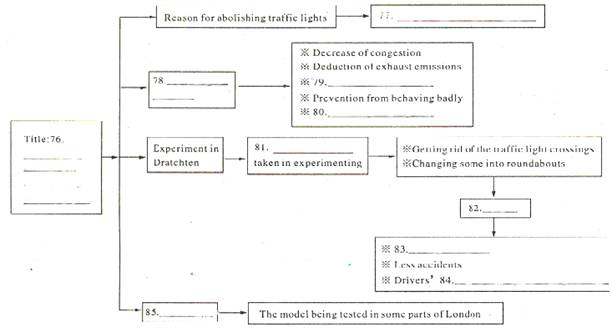题目内容
There are many famous museums throughout the world where people can enjoy art, Washington, D.C. has the National Gallery of Art(美术馆); Paris has the Louvre; London, the British Museum. Florida International University(FIU) in Miami also shows art for people to see. And it does so without a building, or even a wall for its drawings and paintings.
FIU has opened what it says is the first computer art museum in the United States. You don't have to visit the University to see the art. You just need a computer linked to a telephone.
You can call the telephone number of a University computer and connect your own computer to it. All of the art is stored in the school computer. It is computer art, produced electronically (采用电子手段) by artists on their own computers. In only a few minutes, your computer can receive and copy all the pictures and drawings.、
Robert Shostak is director of the new computer museum. He says he started the museum because computer artists had no place to show their works.
A computer artist could only record his pictures electronically and send the records, or floppy discs(软盘), to others to see on their computers. He could also put his pictures on paper. But to print good pictures on paper, the computer artist needed an expensive laser(激光) printer.
Robert Shostak says the electronic museum is mostly for art or computer students at schools and universities. Many of the pictures in the museum are made by students. Mr Shostak said the FIU museum will make computer art more fun for computer artists because more people can see it. He says artists enjoy their work much more if they have an audience. And the great number of home computers in America could mean a huge audience for the electronic museum.
【小题1】The main purpose of this text is to give information about ______.
A. famous museums throughout the world.
B. a computer art museum in Miami, U.S.A.
C. art exhibitions in Florida Intentional University
D. latest development in computer art
【小题2】To see the art in FIU museum, your special needs include ______.
| A.floppy discs |
| B.a computer and a printer |
| C.pictures and drawings on paper |
| D.a computer connected to the museum by telephone line |
| A.Paintings drawn by means of computer. |
| B.Different styles of paintings. |
| C.Drawings done by art students of FIU. |
| D.Old paintings. |
| A.Robert Shostak wanted to do something for computer scientists |
| B.Robert Shostak wanted to help computer artists |
| C.art students needed a place to show their works |
| D.computer scientists wanted to do something about art |
| A.art students |
| B.owners of computers |
| C.exhibits in the museum |
| D.those who can enjoy art |
【小题1】A
【小题2】B
【小题3】A
【小题4】C
【小题5】D
解析试题分析:本文介绍了世界上第一个网艺术馆Florida International University(FIU)的具体情况。
【小题1】A 主旨大意题。根据文章第一段前4行There are many famous museums throughout the world where people can enjoy art, Washington, D.C. has the National Gallery of Art(美术馆); Paris has the Louvre; London, the British Museum. Florida International University(FIU) in Miami also shows art for people to see说明本文主要讲述的是世界上的很多著名的博物馆,故A正确。
【小题2】B 细节题。根据文章2,4段You just need a computer linked to a telephone.
But to print good pictures on paper, the computer artist needed an expensive laser(激【小题3】A 细节题。根据文章第四段前3行A computer artist could only record his pictures electronically and send the records, or floppy discs(软盘), to others to see on their computers. He could also put his pictures on paper.说明这些作品都是通过计算机输入的,故A正确。
【小题4】C 细节题。根据第三段最后一句He says he started the museum because computer artists had no place to show their works.说明C正确。
【小题5】D 推理题。根据文章倒数第二句He says artists enjoy their work much more if they have an audience.句意:如果他们的作品有观众,他们会很喜欢。这里的an audience是指观众。故D正确。
考点:考查新闻报告类短文阅读
点评:本文介绍了世界上第一个网上博物馆Florida International University(FIU)的具体情况。本文考查细节题为主,细节题可以在文章中直接找到与答案有关的信息?或是其变体。搜查信息在阅读中非常重要它包括理解作者在叙述某事时使用的具体事实、数据、图表等细节信息。在一篇短文里大部分篇幅都属于这类围绕主体展开的细节。做这类题一般采用寻读法?即先读题,然后带着问题快速阅读短文,找出与问题有关的词语或句子,再对相关部分进行分析对比,找出答案。

 天天向上一本好卷系列答案
天天向上一本好卷系列答案 小学生10分钟应用题系列答案
小学生10分钟应用题系列答案